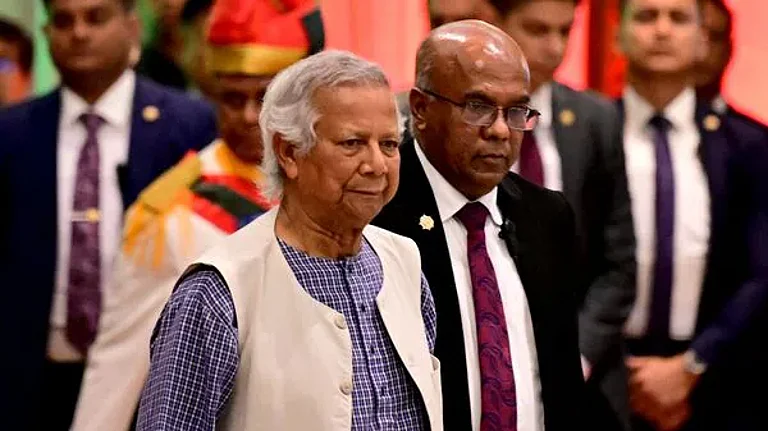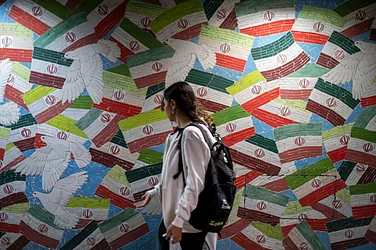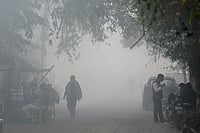Sheikh Hasina's departure underscores the power of collective action, demonstrating how unified voices can reject the reigning government upon lack of trust in order to uphold democratic principles. However, her resignation signifies a regime change rather than a true resolution to Bangladesh's systemic issues. The fundamental problems remain, calling for deeper reforms and more responsive governance.
Shafiq Bari, a youth of Bangladesh and the Founding Chairman of TARS INDUSTRIES says, “I firmly believe that any change in regime must not only uphold but also strengthen our democratic norms to secure a prosperous future. He further elaborates, the protests reflect the public's demand for greater accountability and transparency in governance, which is essential for a thriving democracy”.
Bangladesh lately has experienced a severe civil meltdown, with widespread protests driven by demands for jobs, fair quotas, and solutions to unemployment. The situation has escalated to a level that was once unimaginable, reflecting deep-seated political and social tensions within the country. The situation in Bangladesh highlights critical lessons for India, emphasizing the importance of fortifying its democratic processes, human rights practices, and political stability to prevent similar unrest. As Nobel Laurette Professor Mohammed Yunus has been appointed as the head of the interim Government. Shafiq Bari says, “With Professor Yunus's leadership, there's hope that his focus on social business and entrepreneurship will lead to innovative solutions for the economic challenges we face. There is cautious optimism in the country, as many believe his experience and vision could bring meaningful change. While Sheikh Hasina's government focused on large-scale infrastructure and policy-driven employment generation, Prof. Yunus is expected to emphasize grassroots initiatives, empowering individuals through microfinance and social businesses to create sustainable employment opportunities”.
Bangladesh’s problems are deeply structural and systemic. Sheikh Hasina’s resignation alone will not rectify these issues. The new leadership must tackle these challenges head-on and strive for genuine societal transformation to achieve lasting progress of the nation.
Throughout its history, Bangladesh has endured 28 coups. Notably, many significant protests in Bangladesh have been spearheaded by students, particularly those from Dhaka University. Examples from past student-led movements include the 1952 Bengali Language Movement and the 1990 Mass Uprising against military rule, both of which played critical roles in shaping the nation’s political landscape.
Sheikh Hasina and the Student Uprising
Sheikh Hasina, once a student leader herself, underestimated the power of student activism in Bangladesh. Despite her understanding of its potential, she could not access the repercussion and mishandled the growing unrest in her country. Blocking the internet and controlling social media proved ineffective in quelling the dissent. Instead of addressing the grievances of the protesting students, she labeled them "Razakars," a term historically linked to collaborators with Pakistani forces during the Bangladesh Liberation War, notorious for their atrocities. This insensitive remark exacerbated the situation. Although the Supreme Court reduced the quota to 5%, Hasina’s comments, questioning the protesters’ loyalty to the freedom fighters, only inflamed the discontent. She questioned, "Why do they have so much resentment towards freedom fighters? If the grandchildren of the freedom fighters don't get quota benefits, should the grandchildren of Razakars get the benefit?"
The quota system, introduced by Sheikh Mujibur Rahman, initially provided a 30% reservation for freedom fighters and women from backward areas. Hasina’s government extended this 30% quota in jobs to families of veterans from the 1971 war, triggering nationwide protests by Bangladeshi youth. The Supreme Court of Bangladesh intervened, ordering a rollback of the quota system, which temporarily pacified the student leaders. However, a second wave of protests, fueled by opposition parties and external forces, soon emerged, demanding Hasina’s resignation. The escalating crisis led to her fleeing the country and a regime change.
Lessons for India and Bangladesh
Over the past 15 years, both India and Bangladesh have witnessed substantial economic growth, significantly raising the aspirations of their youth. Energized by inclusive economic policies and new visions of progress, the younger populations in these countries have grown increasingly hopeful about their futures. However, the failure to deliver on job promises and the prevalence of political rhetoric have led to growing unemployment, causing widespread resentment among the youth.
When governments undermine the reality on the ground and suppress the voices and grievances of their citizens, it often leads to chaos, as evidenced by the recent events in Bangladesh. Mismanagement, coupled with a lack of genuine engagement, exacerbates law and order issues. “In today’s networked society, rising inequality and aspirations as well as youth unemployment , there is always such a possibility. We already had this situation in our neighbour—Bangladesh and Sri Lanka. And saw similar outbursts on specific issues of Agniveer and Exam Scams. India also had in the past big student led movements like Naxalite in Bengal in 1960s, Nav Nirman in Gujarat against corruption in 1970s, JP led student movement in Bihar (1970s) , Assam in the 80s etc. So the possibility can’t be ruled out and govts need to be on their tows to fulfil aspirations of the youth”, says the prominent Professor Harjeshwar Pal Singh from India while sharing his perspective on the circumstances that led to a coup in Dhaka, in the context of youth issues and unemployment, which could be relevant to India.
Election manifestos in both India and Bangladesh have historically focused on youth-centric policies and employment generation. Despite these promises, effective implementation has often been lacking, resulting in disillusionment among the young population. Both countries have dense populations with high percentages of youth, making the issue of unemployment even more critical.
The economic fallout from COVID-19, compounded by the Ukraine war, has exacerbated the unemployment crisis and inflation in South Asia . If left unaddressed, the demographic dividend of the subcontinent could turn into a demographic burden, with far-reaching impacts not only within the region but globally. The situation in Bangladesh, marked by government mismanagement and insensitivity towards common citizens, serves as a cautionary tale for India. The story of Bangladesh underscores the importance of sensitive governance and the need to address citizens’ grievances early on. In India, the government’s initial disregard for the farmers’ protests until they marched to Delhi, and the current indifference to protests in Ladakh and Manipur, serve as cautionary examples.
Furthermore, a democratic government must provide space for opposition parties and healthy criticism. In Bangladesh, the second wave of protests became an opportunity for the opposition to destabilize the elected government, plunging the country into crisis. This highlights the importance of inclusive governance and responsive leadership.
The trajectory of coups in Myanmar and political turmoil in Bangladesh underscore the decline of democracy and its diminishing efficacy as a governance model in South Asia. While the empowerment of the masses holds the potential for significant political and social change, misdirected popular movements can thrust a nation into chaos. In India, the opposition has faced considerable challenges over the past decade. However, it has recently regained traction in Parliament, fueled by widespread public discontent and past nationwide protests, resulting in a stronger parliamentary presence.
Challenges for India: Navigating the Fallout from Bangladesh
The cross-border implications and Spill-Over of Bangladesh’s political turmoil pose significant challenges for India, which shares a porous 4,096 km border with Bangladesh. This border spans five Indian states: Assam, West Bengal, Mizoram, Meghalaya, and Tripura. The primary concerns for India include cross-border migration and the infiltration of non-state actors. As the situation in Bangladesh evolves, India is reassessing its stance and policies, potentially limiting cross-border interactions to contain the repercussions of the rebellion.
The recent issue of reservation in states like J&K and Bihar and SC introduction of the concept of sub- classification in reservation quota SC/ST might impact social balance and create social vacuum in certain fractions. Furthermore, the current scenario in the neighbourhood has given convincing reasons to potentially accelerate the implementation of policies like the Citizenship Amendment Act (CAA).
India is a dominant player in South Asia thus crisis in the region undoubtedly will have domino effect on India’s regional politics. Hence, The current crisis in Bangladesh underscores the complex and interlinked nature of regional stability. For India, a proactive and strategic response is essential to protect its interests, address internal challenges, and foster regional stability. Strengthening democratic institutions and maintaining responsive governance are crucial for mitigating unrest and ensuring long-term progress in South Asia.
(Kanwal Singh a Policy Analyst and Columnist from J&K & Advocate Sagina Walyat is a Researcher, An Analyst, An AsiaGlobal Fellow, The University of Hongkong.)

























